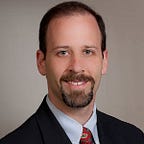Estate Planning; An Overused Phrase with Underapplied Principles
Estate planning is experiential -a specific document or technique, such as a will, life insur-ance, or a trust. Some professionals use estate planning as a catchall phrase to sell financial products. Estate planning involves establishing plans to deal with death, disability, and ap-point competent backups.
The major goals involve:
(1) appointing the right people;
(2) ensuring assets go to the right people, at the right time;
(3) structuring inheritances to maximize;
(4) minimizing taxes;
(5) minimizing court;
(6) streamlining successor management;
(7) insulating and protecting assets
Each plan should be unique to the family and goals. One size fits all usually fits none. The term “planning” is overused but can be vital. Families with simple asset structures “need” less planning because there are fewer moving parts. More moving parts needs more flexi-bility to account for changing circumstances and harmonizing tools.
Planning smooths transitions, regardless of what creates the transition (death, disability, retirement). Neglecting planning does not avoid it, but merely leaves it to others to deter-mine in the future, usually post-death when emotions run high and options are limited. Hasty planning in a compromised setting, usually has a new goal of mitigating problems.
A major goal of estate planning is what happens to assets at death; at a high level, we aim to direct all assets to be enjoyed but not squandered. Families with modest assets usually leave specific assets or amounts to children. When values are low that can work. When asset values grow, and assets are not easily divisible, earmarking specific assets or amounts is inefficient.
More often, successful families have assets continue in an entity (LLC, LP, trust). Equity though is just one piece. Management can be the more important role that is commonly missed. Equity means nothing if asset value plummets due to a vacuum in management.
Hoping children will figure it out often fails due to a lack of preparedness. Even as educat-ed adults, beneficiaries often lack business experience. Many customers, employees, and managers leave, and can take employees and customers with them, to start a competing business. Merely leaving the business to children is inadequate; there needs to be a clear management plan.
Asset management in general raises similar challenges. Most families have structures to own and manage assets, typically where the parents have control. When the senior family members are gone the power vacuum can bring out divisiveness. A vital component of an estate plan is addressing the replacement management team. Management left to the majori-ty vote of their children can pit siblings against one another. Differences in children’s skills and station can lead reasonable minds to disagree. While not a constant, it is common enough that it should provide pause.
Standard estate planning to address disability is a power of attorney and health care docu-mentation (health care proxy, living will). These are core foundational tools and almost universally recommended for good reason. However, they are not all encompassing and have limitations.
A power of attorney allows the named agent to sign — checks, real estate documents and, with expanded powers, access safety deposit boxes, tax returns, make gifts, etc. Using a power of attorney can be cumbersome and requires the document and a sworn affidavit. Many institutions flatly refuse to accept transactions done via power of attorney.
Medical decision making is a more personal aspect of disability planning. The documents name a trusted person to make medical decision when the principal cannot. Most common is the spouse is named and, more often than not, a sibling as the backup. When action is required, the agent is relying on their own judgment and the your wishes yet few actually discuss their wishes. The most useful discussion revolves around generalities since it’s difficult to predict health issues; are less invasive options usually preferable? Conservative versus aggressive? Religious and spiritual issues? Any conversation helps the principal get comfort the agent will carry out their wishes and helps the agent feel they are not imposing their subjective judgment.
The health care documents are not always practical as few people rush to the hospital with papers. A practical approach is to make copies and scan copies to the primary care physi-cian and local hospital. We also prefer to see agent contact information in the document so a nurse can locate the agent faster.
The overriding theme of this whitepaper is preparedness. Estate planning aims to transition what we have to the next generation but the beneficiaries are rarely equipped to receive. An essential, but often overlooked, aspect to estate planning is preparing the children and/or grandchildren.
The younger generations know, in general, the family’s station in life. But when they are thrust into an active role, how can they be expected to achieve when there has been minimal advance preparation? Some grooming is required. A basic understanding of where family wealth came from, where it stands today, and the targets moving forward, can provide per-spective. They need exposure to the family advisors to see firsthand how the family uses its team, how the members interact, and roles, so they are not supplanted by the advisorys.
Work experience, particularly outside of family enterprises, is invaluable. This can provide useful business understanding of finance, marketing, communications, and the like, but more importantly, provide a new perspective.
Estate planning is too often relegated to getting some base documents in place and provides a false sense that the task is done. Estate planning for the successful family calls for exam-ining the unique issues that face the high net worth, namely ensuring that family activities not only can continue, but continue well, the recipients are capable of handling it, and that the legacy can continue to blossom. A little additional thought and preparation can be the difference between doing good and doing great.
Originally published at http://adamchodos.wordpress.com on December 7, 2021.
